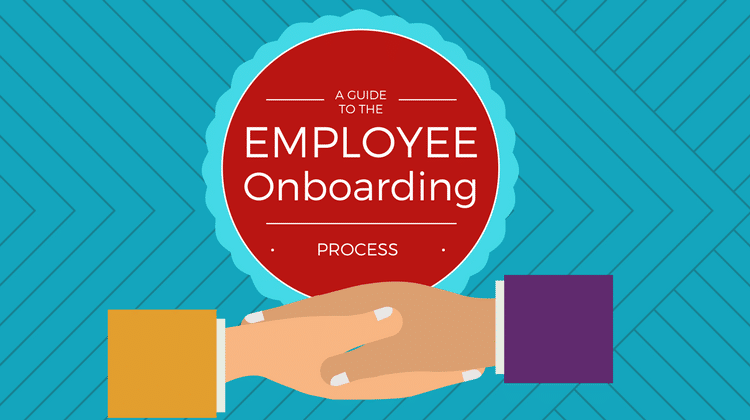
Sponsored by Grace College:
Each year in the United States, more than 25 percent of the working population experiences career transitions, according to the Society for Human Resource Management (SHRM). Managers begin new jobs every two to four years, and in Fortune 500 companies alone, approximately 500,000 managers take on new roles each year.
Career transitions often do not go as planned. Half of all senior outside hires fail within 18 months in a new position. Half of all hourly workers leave new jobs within the first 120 days.
The employee onboarding process can help reverse these trends and add value to the organization.
What Is Onboarding?
“Employee onboarding is the design of what your employees feel, see and hear after they have been hired,” entrepreneur Michel Falcon says in Forbes. “Often, companies confuse onboarding with training. While training does have a role within the onboarding it doesn’t represent the entire scope of the process.”
Onboarding processes range widely from one organization to another. L’Oreal’s onboarding process is a two-year, six-part integration program that includes training and roundtable discussions, meetings with key insiders, on-the-job learning supported by line management, individual mentoring and HR support, along with field and product experiences such as site visits and shadowing. In contrast, other companies resort to the “sink or swim” strategy that often leads to new employees struggling to figure out workplace norms and what they should do.
Formal onboarding involves a written set of coordinated policies and procedures that help new employees adjust to their new job, in terms of tasks and socialization. Informal onboarding involves a process by which new employees learn about their new job without an explicit organization plan. “Research shows that organizations that engage in formal onboarding by implementing step-by-step programs for new employees to teach them what their roles are, what the norms of the company are and how they are to behave are more effective than those that do not,” according to the SHRM.
The first 90 days of employment are pivotal to building rapport with the company, management and coworkers. A study found that new hires in this timeframe had positive attitudes when support levels were high from the team and leaders, according to Maren Hogan, CEO of marketing firm Red Branch Media, in Forbes. A separate study found that when employees go through structured onboarding, they are 58 percent more likely to remain with the organization after three years.
When done correctly, employee onboarding leads to higher job satisfaction, organizational commitment, lower turnover, higher performance levels, career effectiveness and lower stress.
The Four C’s of Employee Onboarding
There are four distinct building blocks of employee onboarding that form a successful process, according to the SHRM.
- Compliance is the lowest level and includes teaching employees basic legal and policy-related rules and regulations.
- Clarification refers to ensuring that employees understand their new jobs and expectations.
- Culture is a broad category that includes providing employees with a sense of informal and formal organizational norms.
- Connection refers to the vital and interpersonal relationships and information networks that new employees must establish to be successful.
The degree to which an organization leverages the four C’s determines its onboarding strategy level. There are three levels, the SHRM says.
- Level 1 is passive onboarding. Compliance is a natural part of formal onboarding, and some role clarification may be given. Culture and connection are not addressed. Approximately 30 percent of organizations work at this level.
- Level 2 is high potential onboarding. Compliance and clarification are well-covered, and some culture and connection mechanisms are present. The complete process has not yet been established in a systematic way across the organization. About 50 percent of all firms work at this level.
- Level 3 is proactive onboarding. The four C’s are formally addressed. Only 20 percent of organizations achieve this level.
How to Improve the Employee Onboarding Process
Organizations can enhance efficiency and create a more successful environment for new hires by focusing on the following ways to improve the onboarding process.
- Standardize the process. Formal onboarding procedures are more effective than informal methods. By standardizing the process, the company will be able to reach a higher onboarding strategy level.
- Include the “how” and “why” — implement training with the organization’s mission. “When you train your new employees in the ethos of the company while simultaneously showing them how to do their job, everyone wins,” Hogan says.
- Incorporate mentorship from seasoned team members. “If your new hire is joining the engineering team, don’t just dump them into your codebase to sink or swim,” according to Liz Hall, vp of people at project management application company Trello. “Rather, set them up with a first week pair programming session. If the new hire is joining the sales team, set up a 20 minute coffee meeting with the most tenured sales team member to talk about how things have changed over time.”
- Consider engaging and fun activities. Interactive experiences using gamification or competitions using entertaining contests can help onboarding become fun. “Employees should be excited from day one,” Andre Lavoie, CEO and co-founder of HR software company ClearCompany, says in Entrepreneur.
- Use feedback and data to continue improving the process. Lavoie recommends having the management team pull data to measure the quality of new hires. You can track employees from the start of employment and look at issues to help see where the onboarding process may have failed. Performance analytics can help improve onboarding, as well as how the company hires candidates.
Grace College’s fully online Bachelor of Science in Business Administration focuses on the skills and tools graduates need to adapt and excel in the business world.